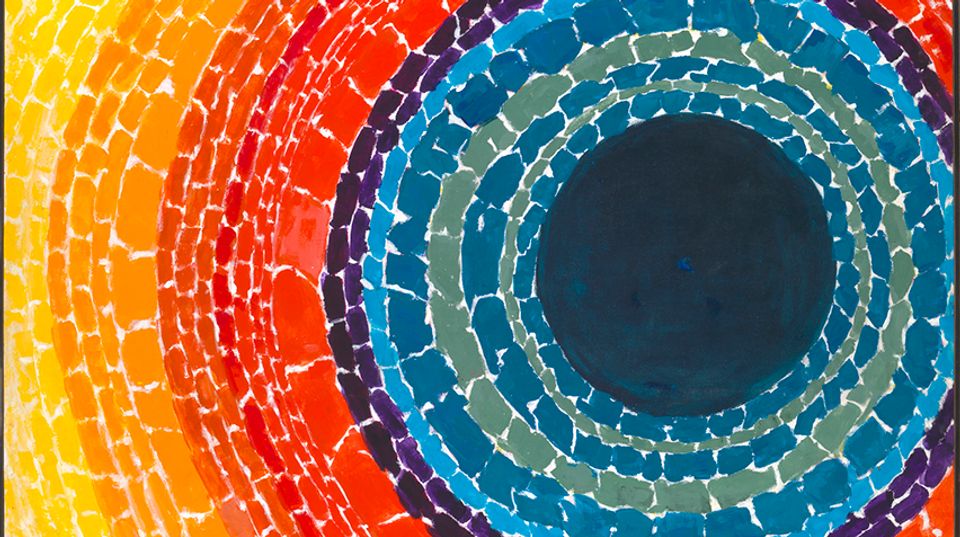
Performances, demonstrations, and talks will mark the opening of the museum tomorrow. Assuming you have some interest in also seeing the art that’s on display, here’s a list of works that deserve your attention:
Frederic Remington, Fired On. A military painter and Western frontier enthusiast, Remington apparently painted this work just after his home town was wired to receive electricity. It’s reasonable to read the light source of the painting as being the moon, though it’s tempting and perhaps illuminating to question whether his interest in and work with light at night did not stem from a newfound way of seeing the world after sunset. (Second floor, east wing)
Benjamin West, Helen Brought to Paris. The exhibition text tells you what you some things about the subject of this work. I find it hard to believe that anyone alive during 1776 in either Britain or America—much less King George III himself—would not have read the plaintive, vexed look on Paris’s face as an allegory for the brewing conflict, even if at the time, no one knew exactly how momentous that conflict would become. Regardless, it’s a rare example of an American doing the kind of historical painting that was de rigueur at that time in the cosmopolitan centers of Europe. (Second floor, south wing)
The Dewing Piano. This artifact is on loan to American Art from the National Museum of American History. A symbol for the Gilded Age, the Steinway piano was painted by Thomas Wilmer Dewing in 1903 on the occassion of the Steinway & Sons company’s fiftieth anniversary and was given to the White House during Teddy Roosevelt’s administration. (This instrument itself was the 100,000th piano produced by the company.) Painting in the style of contemporaries like Whistler and Thayer, Dewing portrayed the nine muses coming to America; his wife, Maria Oakey Dewing, contributed to the design. Rachmaninoff played the piano once, and it entertained the administrations of Taft, Wilson, Harding, Coolidge, Hoover, and both Roosevelts. (Second floor, corner of east and north wings)
Arthur Dove, Sun. An early American abstract artist, Dove worked in the proper sense of the term “abstract,” painting pieces that represented but did not depict real natural scenes. He called these works “extractions.” (First floor, south wing)
Skylights. Mills’s skylights in the Lincoln Gallery have not been displayed properly in our lifetimes. The lay light in the Great Hall was added by Adolph Cluss by 1883, after a fire ravaged the building. You won’t be able to miss them.
Otesia Harper, Coke Covers the World. One of the pieces in the folk galleries installed by artist Bill Christenberry, this quilt is a great comment on global consumerism and corporitization, contrasting those qualities with the handmade and highly individualized. (First floor, west wing)
Lincoln Gallery graffiti. A person with the initials C.H.F. left his or her mark on the gallery on August 8, 1864. The graffiti have been preserved—-you can find the carving (under a pane of glass) on a window frame near Liz Larner’s Bird in Space.
Clyfford Still, 1946-H (Indian Red and Black). Still’s painting commands central attention in a room of abstract works on the modern wing off the Lincoln Gallery. This Still is small relative to other works by the artist (and compared with the two Franz Klines that flank it), but it shows that Still didn’t have to work large. (Third floor, north wing)
George Catlin, Prairie Meadows Burning. My favorite Catlin painting isn’t hanging in the museum—it’s in the Luce Center. You can find it among the nineteenth-century paintings.



















